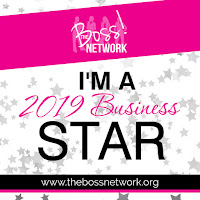Say What?! by Reneé Lowe
Have you ever been listening to a presentation and you looked
to the person next to you in confusion? Maybe you pretended to know what was
being spoken about and later complained about the speaker over lunch with a
friend. Speaking publicly is part of the PR professional job description and
one has to become comfortable with it or their career may suffer.
Public speaking is something that I did not think I would ever do in my life, until my first big
corporate job. I was surprised when it came so naturally because I was never
one to speak to large crowds. As my duties changed, I found myself speaking to
small groups and building up to large conferences.
The most memorable presentation I gave was to a group of
librarians, lawyers and analysts. It was for a major government sector and I
was scared! The whole ride over in the cab seemed like it was a walk down the
plank with a pirate poking me in my back. I have to say, once I got settled
into the groove of the presentation, I was relaxed and felt like nothing could
conquer me! The librarian’s eyes stared into me like lasers, the lawyers
grilled me like a steak and the analysts tried to pick me apart like vultures.
All of them were testing my knowledge on the usefulness of the online products
I was there to discuss. It was a shark tank indeed, but I made it through with
no professional injuries...thank goodness!
I guess that public speaking course in college was well worth
it and how amazing it was, when all of what I had learned came right back to
me. Even though my professors were old-school in their instruction, I am
thanking them heavily today. As we become an online and "right now"
society, we forget about the simple ways to work through awkward situations and
public speaking is no different.
Here are four key tips
that I learned to have a smooth event when speaking to an audience:
One of the first things my professors taught me was to
approach speaking in public like a stop sign.
This means that you need to slow down and stop in order to clear your
head to get to the next thought. This also includes leaving the fancy industry
words out. Keep your speeches simple and practical. Your audience will thank
you for it!
The second is to know your audience. How can you engage them
in your presentation if you have not learned who they are? There is nothing worse than sitting through a
presentation and the audience begins to lose focus because you are not staying
relevant to their needs. Research and have an outline of who you will be
speaking to and address specific areas that they would be interested in.
The third point I learned was to be mindful of the time. If
you are given 30 minutes to speak, wrap it up in 20. This is the age of the World Wide Web and
attention our spans have dropped dramatically.
There is always a more interesting website to click to, so we lose focus
very easily. Think of your presentation
as a website and you must do all that you can to keep the web surfer engaged. After all, you worked hard to build an amazing
visual tool, so you must make it worth their while to stay on your page.
The fourth and final point that is probably pretty obvious,
but it is to PRACTICE! Even the President of the United States practices his speeches.
This is why folks that speak publically on a regular basis can look up from
their notes and connect with the audience. Never read your notes like a novel
and forget to make eye contact. Making eye contact and being confident in the
information that you are delivering is a major part of your “sell”, so practice
in the mirror and also in front of friends.
This will give you an opportunity to make adjustments and perfect your
speech before you make your presentation. Do you have some tips for public
speaking? Feel free to share what has worked for you!
Learn more from Renee Lowe and follow her at @onyxqueenmedia





Comments
Post a Comment